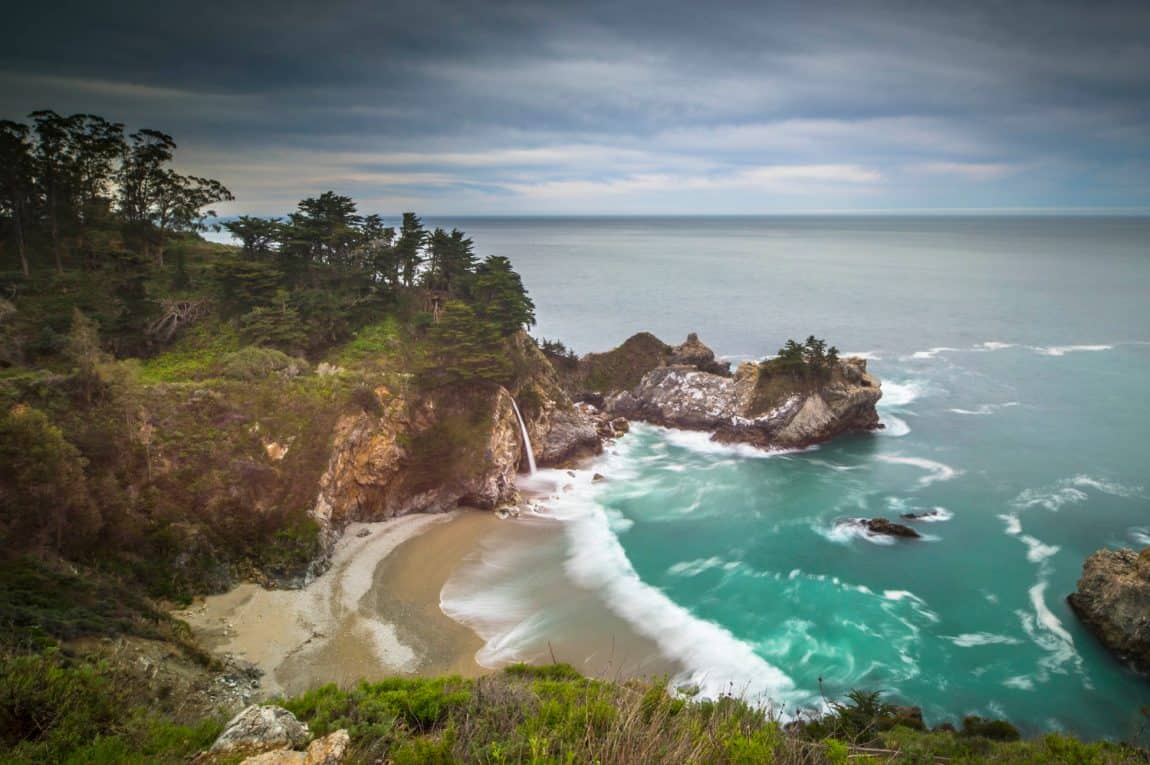
There is little to no rain and the highs hang in the high 70s on the coast and in the 80s inland. And for good reason: summer offers the best weather. Summer is peak season for tourism in Big Sur, meaning you'll run into high prices for accommodations, as well as lots of other travelers on the trails. In April, the Big Sur International Marathon draws crowds in the thousands, as it is the only time the highway is closed for pedestrians. In March, visitors can catch the last of the gray whale migration and the birth of sea otter pups. Big Sur is filled with spectacular flora with wild iris blooming in the forest, willows and calla lilies showing up near creeks, and emerald green hills sprouting Lupine and California poppies. Aside from fewer rain showers and a slight rise in temperature, spring is favored for its flowers. March still experiences frequent rain with more than 6 inches on average annually, but that peters out as soon as April hits. The regular rainstorms are a drawback, but these storms make way for clear skies that the summer fog doesn't allow - perfect for stargazing. Keep in mind that Big Sur's winter temperatures deviate from the norm, with the highs hanging in the 60s and the lows staying in the 40s. Sea otters also give birth to new pups in January and February, so if you see a sea otter floating in the water, look out for a baby floating alongside its mother. January is peak season for elephant seal spotting, as females come ashore and give birth during the last half of the month. From December to February, gray whales migrate along the Big Sur coastline down to the warmer waters of Mexico. Also, if you're looking for some face time with Big Sur's wildlife, winter is the best time to visit. On the flipside, expect to find affordable lodging rates during these months. The lower temperatures, greater chance of rain, some road closures and abbreviated business hours clear out any remaining fall crowds. If you're looking to have Big Sur to all to yourself, visit during winter.

That number dwindles even more come November when the rainy season starts to kick in.

Weather in Big SurĪlthough September and October are still considered part of Big Sur's peak season, the crowds are more manageable compared to the summer months. With this in mind, it's best to pack a jacket any time of year. Temps on the coast tend to be cooler than the mountains, especially during the summer. It's important to note that temperatures in Big Sur vary by geography. But along with heavy crowds, coastal fog is another downside it can hang around as late as midday.

Summer is the busiest season, offering visitors pleasant temperatures and plenty of activities and programs offered by the region's parks and educational societies. Spring ushers in cooler temperatures and the bloom of the area's beautiful wildflowers.

But these cheaper prices coincide with the rainy season and often even road closures. Winter, especially December, is considered the best time to visit Big Sur for those looking to snag a deal on lodging. However, once August passes, crowds start to disperse and high temperatures inland start to drop, leaving more room for visitors to wander on the coast and the mountains. With more than 300 days of sunshine per year, Big Sur's peak season runs long, from April to October. The best time to visit Big Sur is from September to November.


 0 kommentar(er)
0 kommentar(er)
